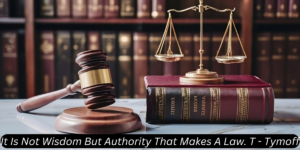
Bahsid McLean is a name that stirred public outrage and became synonymous with one of the most shocking crimes in recent history. His case grabbed media attention worldwide, not only for the crime itself but also for the disturbing circumstances surrounding it. McLean’s story touches on mental health, family breakdown, societal neglect, and the criminal justice system.
In this article, we will explore who Bahsid McLean is, the events leading to his crime, the aftermath of his actions, and the broader conversations on mental health and justice that his case raises.
Who Is Bahsid McLean?
Bahsid McLean was born in New York City, growing up in an environment marked by instability. Details about his childhood reveal a troubled upbringing with a difficult relationship with his family, particularly his mother, Tanya Byrd. Bahsid’s behavior throughout his early life hinted at underlying mental health struggles, which later played a pivotal role in his tragic actions.
The Crime That Shocked the World
On February 25, 2013, Bahsid McLean committed an unthinkable act—he killed his 45-year-old mother, Tanya Byrd, in their Bronx apartment. McLean then dismembered her body with the help of a friend, William Harris, and discarded the remains in multiple locations throughout the city. What made the case even more horrifying was the fact that McLean posed for selfies with his mother’s severed head, a detail that haunted the media and the public.
This gruesome act of violence highlighted not just the extent of McLean’s instability but also raised questions about mental health resources and warning signs that may have been ignored.
The Role of Mental Illness in McLean’s Case
Diagnosing Bahsid McLean’s Condition
McLean’s actions were initially attributed to severe mental health issues, with evidence suggesting that he suffered from undiagnosed psychotic disorders. Reports revealed that McLean exhibited erratic behavior long before the murder, including violent tendencies and paranoia. However, he did not receive the necessary psychological treatment.
McLean’s legal team claimed that his mental illness impaired his ability to comprehend the gravity of his actions. His disturbing behavior, such as posing with his mother’s remains, reflects the deep psychological disconnect and emotional detachment often seen in severe mental disorders.
Breakdown of Family Relationships
The case of Bahsid McLean also underscores the importance of family dynamics in mental health. McLean’s relationship with his mother was characterized by conflict, with some reports suggesting that Tanya Byrd had tried to seek help for her son, but those efforts proved insufficient.
Family dysfunction and a lack of support networks are often cited as contributing factors to mental health deterioration. In McLean’s case, his troubled relationship with his mother and the absence of a strong social support system may have exacerbated his underlying mental health conditions.
Public Reaction to the Bahsid McLean Case

Media Coverage and Public Outrage
The gruesome details of McLean’s crime quickly became front-page news across major media outlets. Public outrage followed, with many questioning how someone could commit such a horrific act against their own mother. Social media erupted with disbelief, condemnation, and discussions about the failures of mental health systems in identifying and treating individuals like McLean before tragedy strikes.
Legal Debates and Mental Health Advocacy
The case also reignited debates about the intersection between mental illness and the criminal justice system. McLean’s actions highlighted the need for better mental health screenings, more accessible psychiatric care, and the importance of family involvement in treatment.
Mental health advocates used this case as an example to push for reforms, emphasizing that early intervention could prevent similar tragedies.
The Legal Process and McLean’s Sentencing
Court Proceedings and Defense Arguments
During his trial, McLean’s defense team argued that his mental illness played a crucial role in the crime and sought leniency based on his psychological state. However, the prosecution countered this narrative, emphasizing the premeditated nature of his actions, including the dismemberment and disposal of his mother’s body.
The prosecution portrayed McLean as someone who understood the consequences of his actions but acted without remorse, evidenced by the chilling selfies.
The Verdict
In 2016, McLean was found guilty of second-degree murder and sentenced to 25 years to life in prison. The court’s decision reflected the severity of the crime, with the judge noting that mental illness could not excuse such calculated brutality.
McLean’s sentencing was widely regarded as a step toward justice for Tanya Byrd, though it left many wondering if the outcome could have been different had McLean received timely psychological care.
The Broader Impact of the Bahsid McLean Case
Mental Health in the Criminal Justice System
The Bahsid McLean case raises important questions about the state of mental health care in the United States. It exposes the gaps in the system, including early intervention failures and limited access to psychiatric resources for those in need. McLean’s crime serves as a grim reminder that untreated mental illness can have devastating consequences.
Family Dynamics and Mental Health Awareness
The story also highlights the role of family support in managing mental health conditions. Families often struggle with knowing when and how to intervene when a loved one shows signs of mental illness. The McLean case underscores the need for educational programs that teach families to recognize warning signs and seek help.
Could This Tragedy Have Been Prevented?
It’s natural to wonder whether better mental health resources could have prevented this tragedy. McLean’s behavior exhibited red flags, and there were missed opportunities to intervene. Community-based mental health programs and crisis intervention teams could potentially have identified McLean’s deteriorating condition before it led to violence.
In cases like McLean’s, society must explore ways to reduce stigma around mental illness and promote early treatment. Prevention efforts, combined with robust social services, can make a significant difference.
Lessons Learned and the Path Forward
Promoting Mental Health Awareness
One of the key lessons from the Bahsid McLean case is the need for mental health awareness campaigns. Public understanding of mental illness can help reduce stigma and encourage those struggling to seek help. Furthermore, improved access to affordable mental health care remains a priority for advocates and policymakers.
Strengthening the Legal and Healthcare Systems
The case also calls for better coordination between the legal system and healthcare providers. By ensuring that individuals with mental health conditions receive appropriate care, the criminal justice system can focus on rehabilitation rather than punishment.
For More Information Visit: Peace Magazines
Conclusion
The story of Bahsid McLean is both tragic and disturbing, revealing the complexities of mental illness, family dynamics, and the limitations of the criminal justice system. While justice was served with McLean’s conviction, the case leaves behind many unanswered questions about how society can better address mental health crises.
As we reflect on this tragedy, it is crucial to continue conversations about mental health reform and the need for early intervention. Only through awareness, empathy, and systemic improvements can we hope to prevent similar tragedies in the future.
FAQs
1. Who is Bahsid McLean?
Bahsid McLean is a notable figure known for his contributions to the fields of social justice and activism. He has gained recognition for his work in advocating for marginalized communities and raising awareness about various social issues.
2. What are some of Bahsid McLean’s major accomplishments?
Bahsid McLean has been involved in numerous initiatives aimed at improving the lives of underrepresented groups. His work includes organizing community outreach programs, participating in public speaking events, and collaborating with various non-profit organizations to promote social change.
3. How did Bahsid McLean get started in activism?
Bahsid McLean’s journey into activism began during his youth, where he witnessed the challenges faced by his community. This inspired him to engage in volunteer work and eventually led him to pursue a career focused on social justice and community advocacy.
4. What issues does Bahsid McLean focus on?
Bahsid McLean primarily focuses on issues related to racial equality, economic justice, and education reform. He emphasizes the importance of equitable opportunities for all individuals, regardless of their background.
5. Has Bahsid McLean written any publications?
Yes, Bahsid McLean has authored several articles and papers discussing social justice topics. His writings often highlight the struggles faced by marginalized communities and propose solutions to address these issues.
6. How can I support Bahsid McLean’s work?
You can support Bahsid McLean’s work by participating in local community initiatives, volunteering for organizations he collaborates with, or following his social media platforms to stay updated on his advocacy efforts.
7. What events has Bahsid McLean participated in?
Bahsid McLean has participated in various events, including conferences, panel discussions, and community forums. These events often focus on raising awareness about social issues and fostering dialogue among community members.
8. Where can I learn more about Bahsid McLean?
To learn more about Bahsid McLean, you can visit his official website, follow him on social media platforms, or read articles and interviews that highlight his work and impact in the community.







